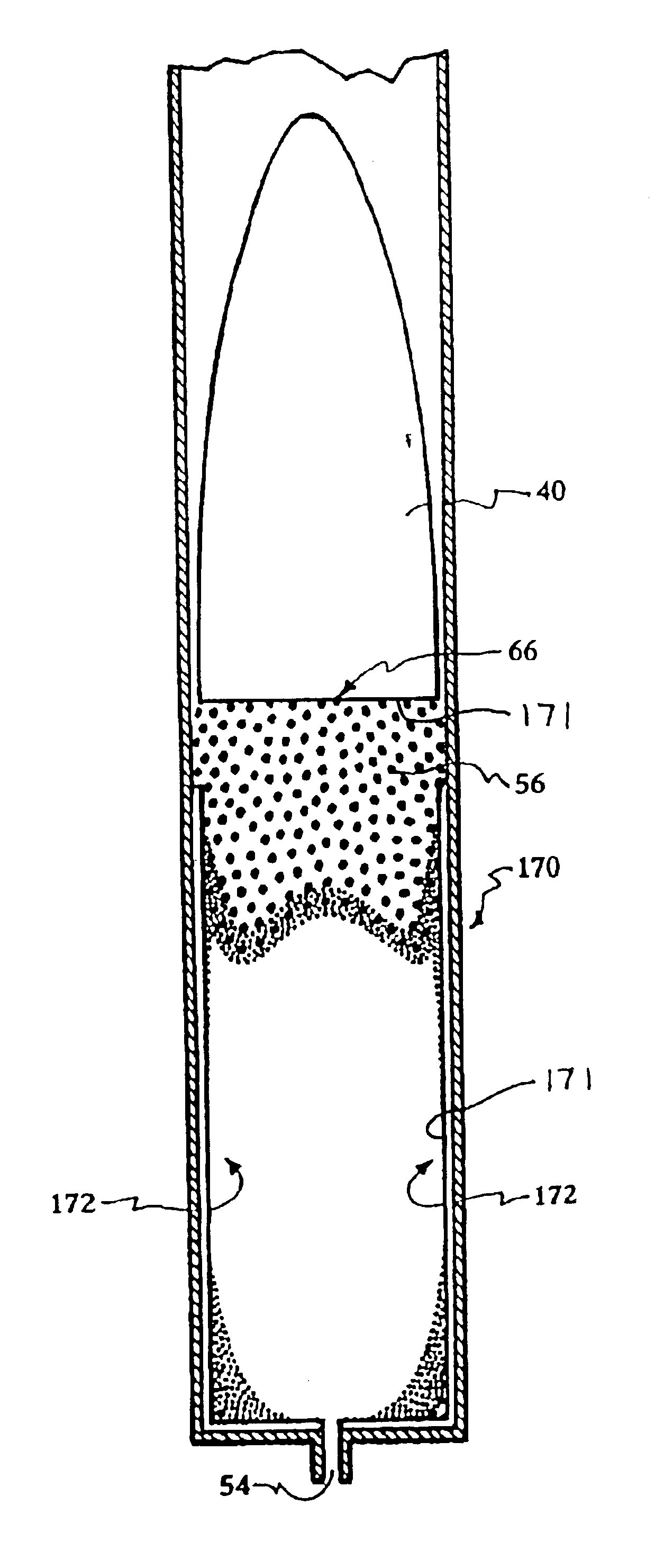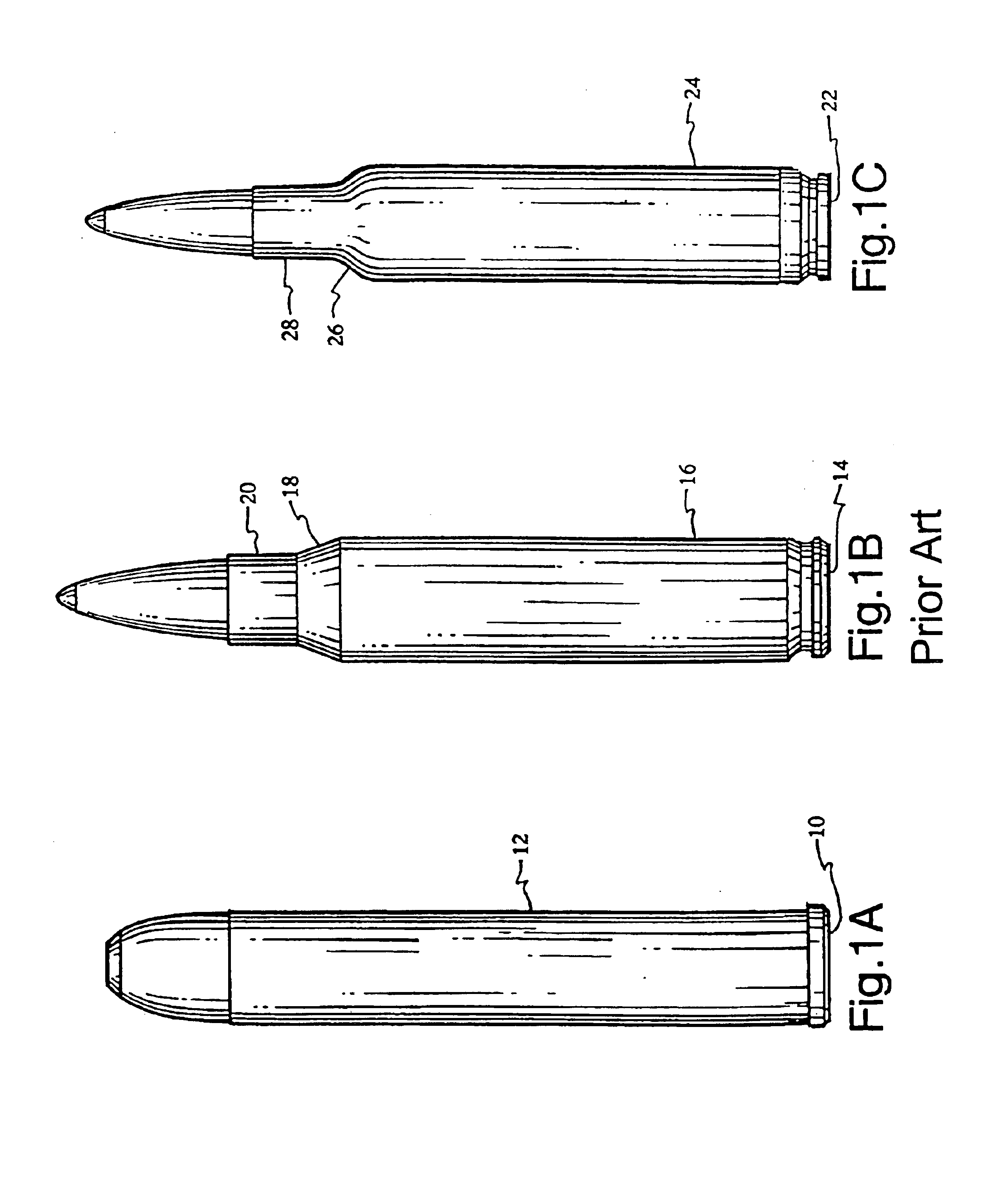Passive coatings and improved configurations for gun cartridges, solid rockets, and caseless ammunition
a technology of caseless ammunition and coatings, which is applied in the direction of ammunition projectiles, weapons, other domestic articles, etc., can solve the problems of significant heat loss to the gun chamber, high acceleration loss, and high heat loss caused by burning propellant in the barrel
- Summary
- Abstract
- Description
- Claims
- Application Information
AI Technical Summary
Benefits of technology
Problems solved by technology
Method used
Image
Examples
Embodiment Construction
A comparison was made of the performance of a conventional straight-walled cartridge in which the cartridge was uncoated, coated with a lacquer-based coating (active accelerant), and with a high temperature polycyanurates-based reflective, thermally insulating reflective coating. The reflective coating contained TiO.sub.2 pigment in an amount from about 25% to 30% by weight. The coating was cured at a temperature of about 400.degree. F. A straight walled 45-70 cartridge was used for these tests. Lacquer based paints were tested first and were shown to have either a negative or no effect.
Test data is given below in Table 1:
All tests utilized 350 gr. Hornady RN bullet and R-P cases. All tests had evidence of unburned powder remaining. Velocity data was the average of 5 tests.
It was concluded, based upon post fire condition, that the internal coating had a thermal breakdown temperature higher than the ignition temperature of the propellant in order to provide the desired effect. Thus, ...
PUM
| Property | Measurement | Unit |
|---|---|---|
| emissivity | aaaaa | aaaaa |
| temperature | aaaaa | aaaaa |
| emissivities | aaaaa | aaaaa |
Abstract
Description
Claims
Application Information
 Login to View More
Login to View More - R&D
- Intellectual Property
- Life Sciences
- Materials
- Tech Scout
- Unparalleled Data Quality
- Higher Quality Content
- 60% Fewer Hallucinations
Browse by: Latest US Patents, China's latest patents, Technical Efficacy Thesaurus, Application Domain, Technology Topic, Popular Technical Reports.
© 2025 PatSnap. All rights reserved.Legal|Privacy policy|Modern Slavery Act Transparency Statement|Sitemap|About US| Contact US: help@patsnap.com



